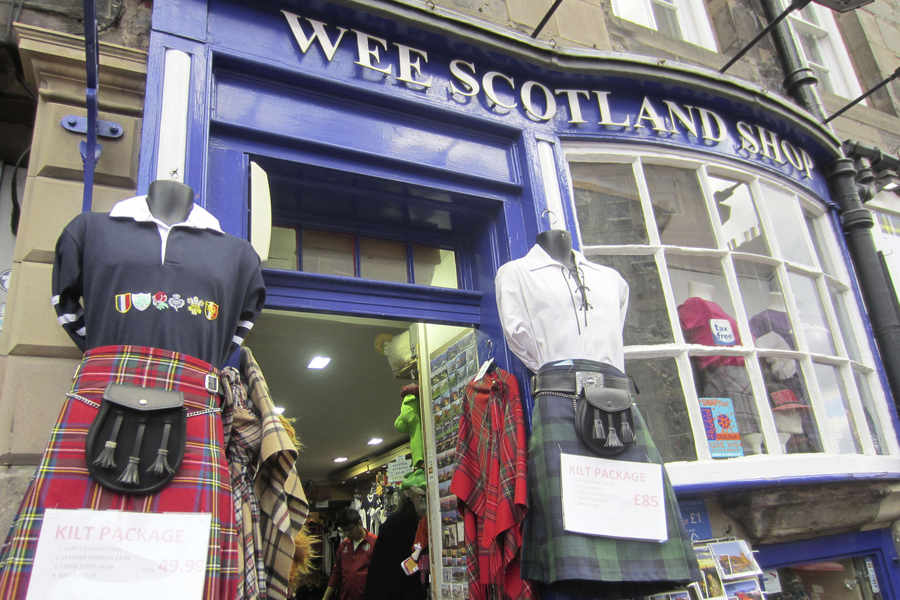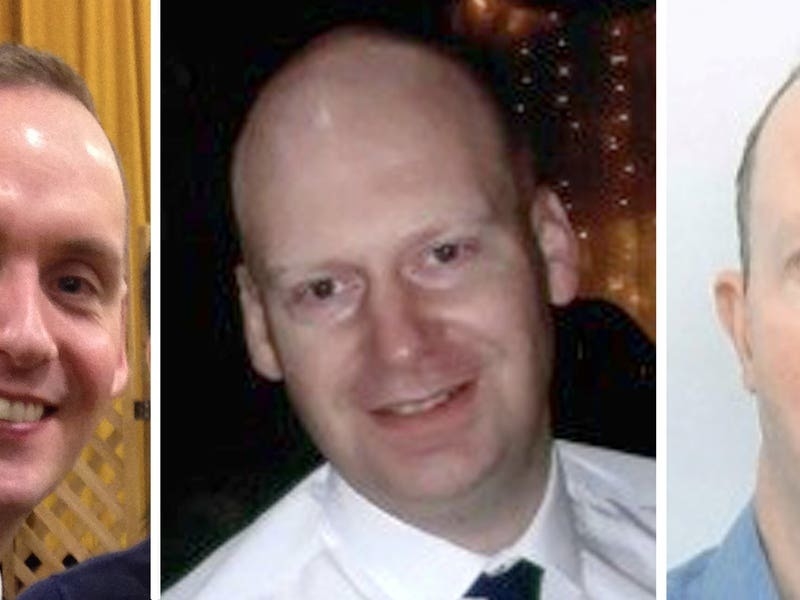He visited him every day in the Greyfriars cemetery for the next 14 years and was buried alongside him.

It’s one of the many stories that visitors to the Scottish capital are regaled with that bring together the two sides of this fascinating city – the light and the dark, the twee and the macabre, the prim and the decadent, the Jekyll and Hyde.
Yes, author Robert Louis Stephenson was an Edinburgh man and visitors are told that he based his Jekyll and Hyde characters on the two faces of his home city – the wealthy ‘new town’, with its Georgian terraces of merchants’ houses, and the tenements on the other side of the Royal Mile housing the poor in cramped and putrid conditions.
Of course, for many Edinburgh is synonymous with its infamous Fringe Festival, but although I arrived shortly after the August extravaganza had ended, there was no shortage of entertainment, although the theatres seemed to be taking a breather. In any case, it was busy enough for me, with visitors from all over the globe thronging the streets and queuing for attractions.
So where is the short-break traveller to start? Given that this was my first-ever visit north of the Border (a terrifying admission in itself), my first task was to find the Royal Mile, the road that lies between two Royal landmarks – the ancient Edinburgh Castle, and Holyrood, which is still a working palace for the Royal family when they’re in town.
The Royal Mile stands on a ridge that drives right through the centre, so once you’ve got your bearings, it really is easy to find your way around, even for someone with as little sense of direction as Yours Truly.
A word of warning before you start. Exploring the streets is addictive and it is all too easy to develop blisters and complete exhaustion. Pace yourself – there is no way that you will be able to see all that you would like to.
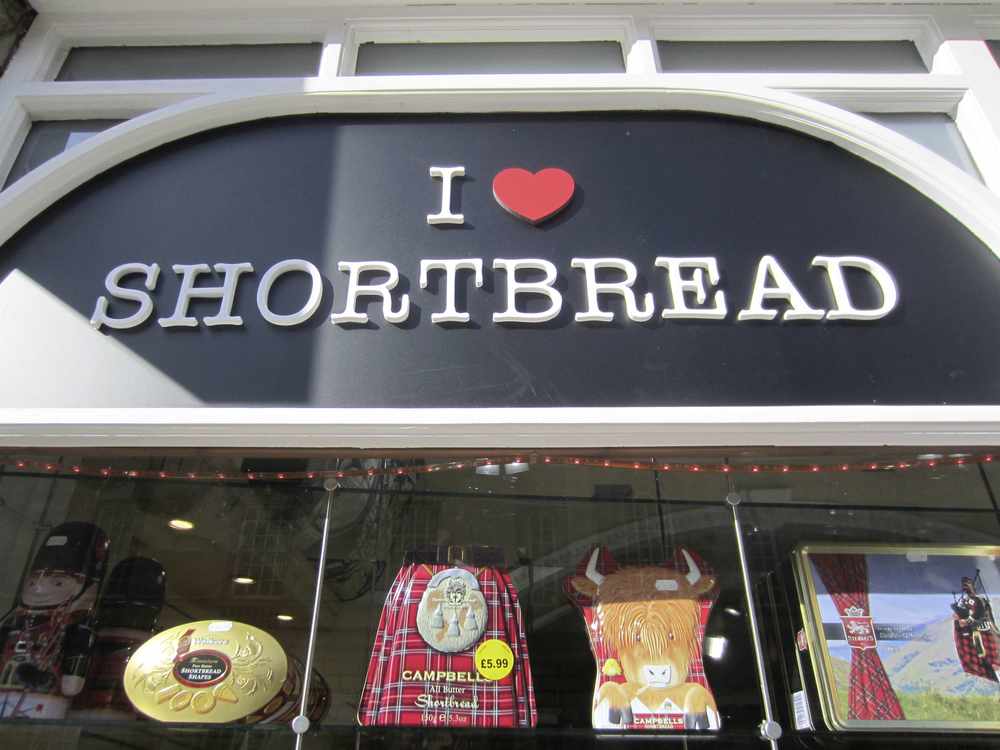
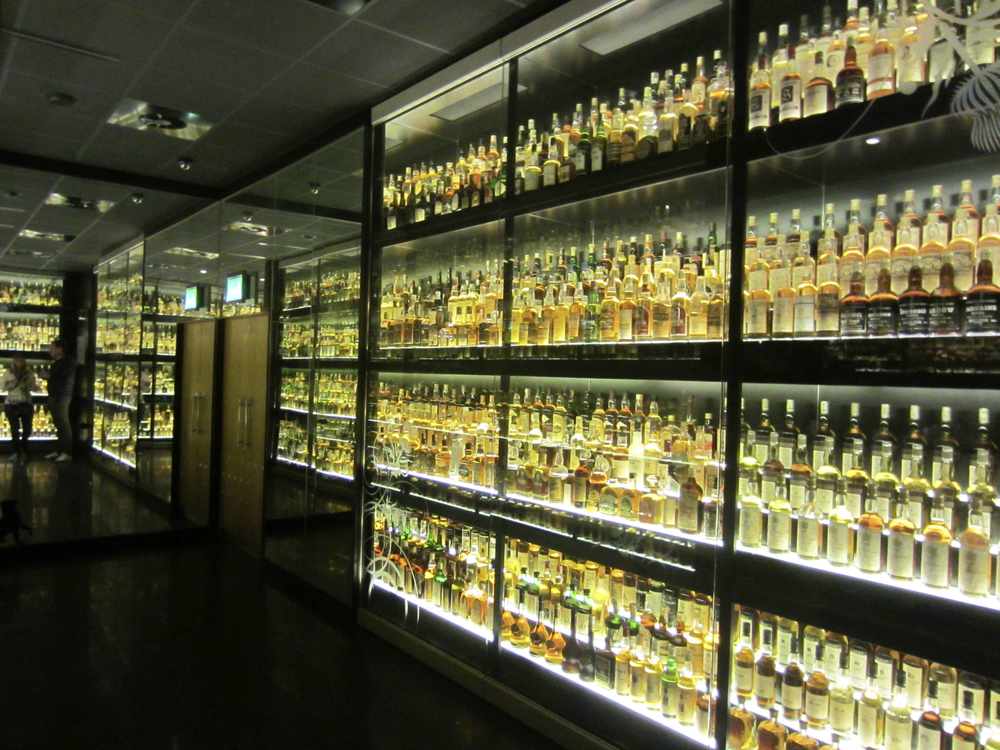
And don’t be taken in by tales of cold weather. During my stay, at least, it was warm, dry and skies were blue, so pack your ‘sunnies’.
I could have chosen any number of tours – many after the hours of darkness – which promise to expose the city’s dark underbelly.
I opted for the Real Mary King’s Close, at the castle end of the Mile, which takes you beneath the City Chambers building to the labyrinth of the 1600s, when eleven-storey tenements teetered on the edge of steep, narrow lanes, or ‘closes’. The original ground floors are still there, some still with their fireplaces, grinding stones and animal stalls, and ghosts…
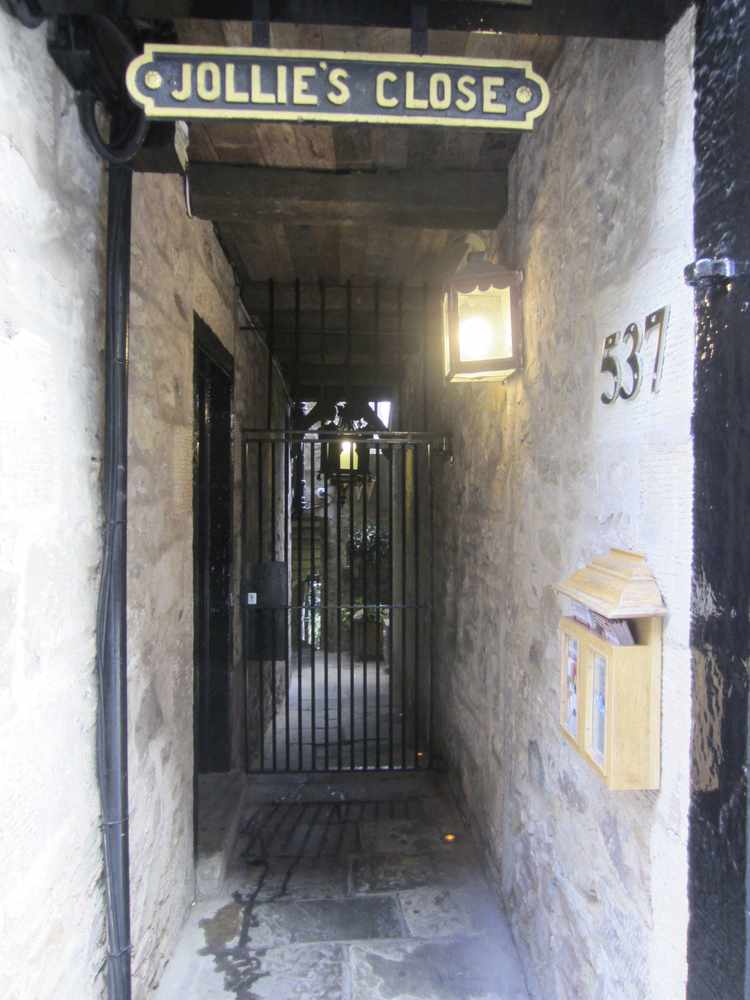
The tour lasts over an hour, brought to life with some 21st-century technology and an animated and informative guide, but if you’re in the least claustrophobic, opt for one of the above-ground tours instead.
Museums there are a-plenty, all of them free of charge, but I was keen to see the Writers’ Museum, which displays letters, photographs and items relating to three of the city’s most famous literary sons – Robert Burns, Sir Walter Scott, and Robert Louis Stephenson.
The museum building, with its twisty staircase, is a mecca for bookworms from all over the world and if you turn up at the right time, you can join the literary tour which leaves from outside the door and takes in sites that provided inspiration for authors ranging from Rebus creator Ian Rankin to Arthur Conan Doyle and JK Rowling, who is said to have penned her Harry Potter best-sellers in an Edinburgh watering hole, the Elephant House.

If you’re a history buff with a need to escape from the tartan hoards, head up to the Castle, where you can stand in the very room where Mary Queen of Scots gave birth to James Vl of Scotland (also James I of England), and gaze on the Scottish crown jewels and Stone of Destiny that Edward I of England captured as a spoil of war, given back 700 years later, in 1996, by Queen Elizabeth II.
The view from the castle walls towards the Firth of Forth and the North Sea is magnificent, but it’s not the only view in town.
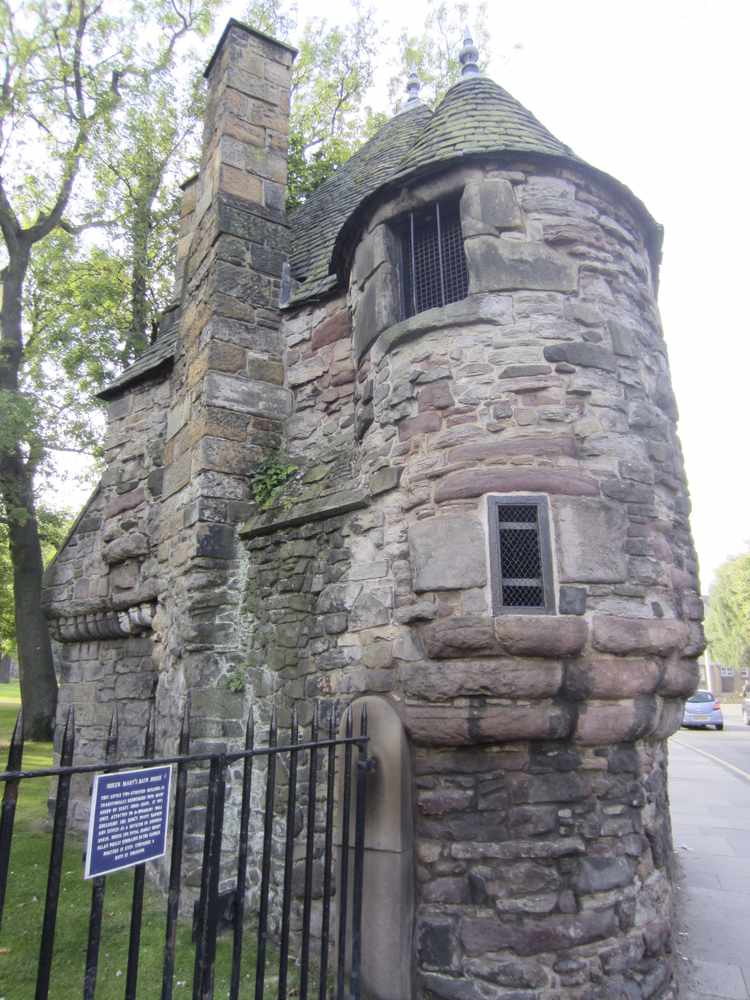
At the Holyrood Palace end of the Royal Mile, the ancient volcanic outcrop of Arthur’s Seat towers over the modernistic Scottish parliament building, which sits defiantly opposite the palace. And if you want to know more about the geology of the place – or earth science in general – pop around the corner to the Dynamic Earth attraction. It’s a lovely area, with plenty to see, and I could happily have spent a day there and tackled Arthur and his landscape into the bargain.
Be warned, though – they’re not early risers down that end of the Mile, so if you try to get into the parliament chambers before
10 am, you’ll be shown the door as a Sassenach.
Art, sculpture and monuments are everywhere throughout the city, not only in galleries, but in the thoroughfares, restaurants and hotels, too, where local artists are celebrated. I particularly liked the National Gallery which, like many of the city’s architectural trophies, was designed by William Playfair, who also, as it happens, designed the hotel I stayed in at 24 Royal Terrace.
For more Georgian excellence, head for the National Trust property in Charlotte Square, designed by Robert Adam, which is not far from the wide boulevard of George Street, with its branded shops.
If shopping’s your thing, Jenners is the place of choice for department store connoisseurs, and there are several modern malls, including one beneath the Visit Scotland tourism office which leads to the main railway station.
You can’t go far in Edinburgh without seeing tartan, kilts, or whisky. I opted for the Scotch Whisky Experience, which is a comforting attraction near the end of a day on your feet.
It isn’t cheap (£24 for a Gold Tour), but for that you get a ghost-train-style tour, a short introduction to the four main whisky-producing areas of Scotland and a decent selection on which to test your tasting prowess.
What I liked about Edinburgh is that you’re never far from the landscape that fashioned it.
So many cities are stifling and oppressive on a sunny day, but in the clear Scottish air there’s always a peak or a green space where you can make your escape.

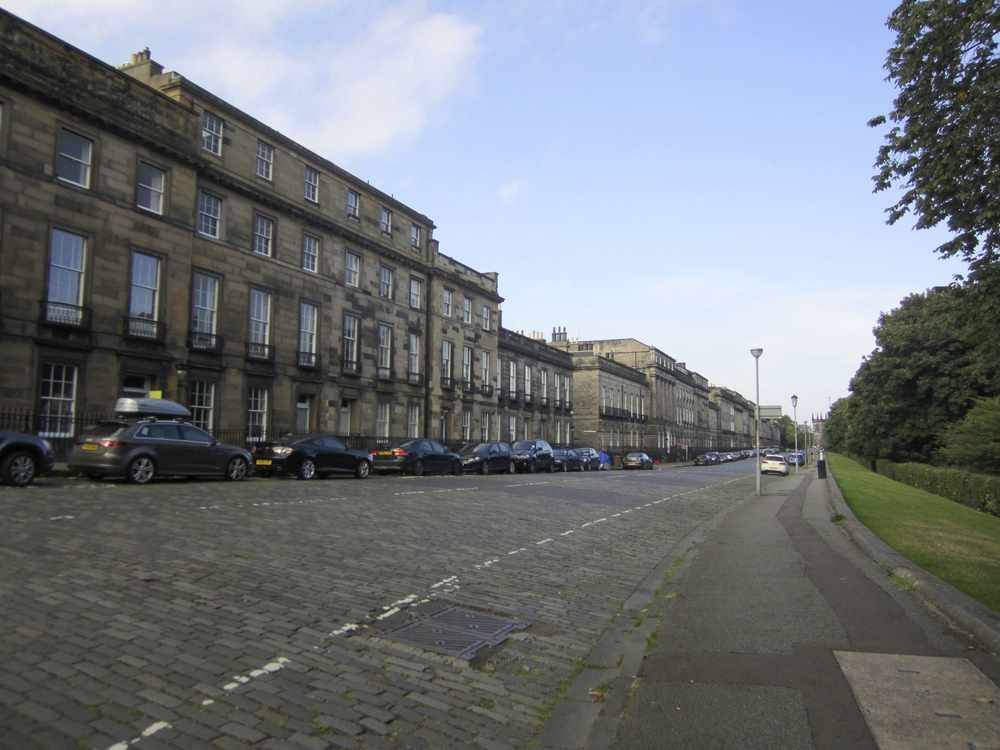
Where to stay
I found 24 Royal Terrace convenient and comfortable, in a quiet area but in walking distance from both ends of the Royal Mile. It has recently been modernised, with a pleasant bar and a comprehensive breakfast, including hearty Scottish porridge with milk supplied in those small bottles with silver tops that I haven’t seen since I was at school. A real oasis.
Getting there
Flybe do offer some direct flights, and more in peak season, but I went via Southampton both ways. All the flights were on time and the wait between flights gave me lots of valuable reading time.
Getting around
I took the tram from Edinburgh Airport. It takes half an hour to get right into the heart of the city and only ten minutes’ walk from 24 Royal Terrace. For sightseeing, try one of the hop-on, hop-off open-top buses, which will save your shoe leather and energy.
Where to eat

